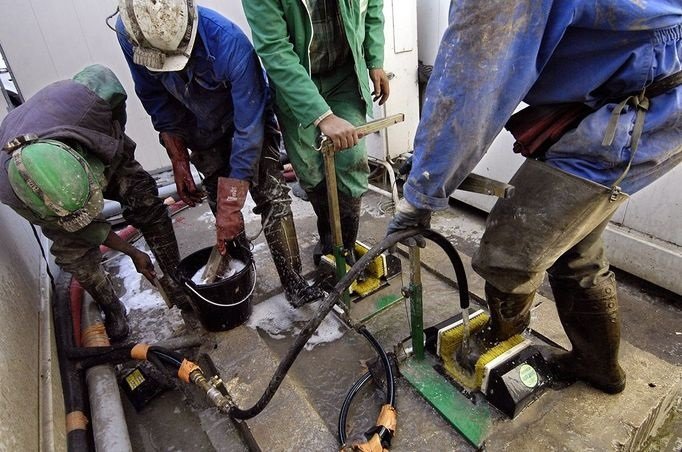Sewage system failures can be a nightmare for homeowners and communities alike. From foul odors to health hazards, the implications of a failing sewage system extend far beyond mere inconvenience. Understanding what causes these failures can empower you to take preventive measures and act swiftly when problems arise. Let’s explore the common culprits behind sewage system failures, their implications, and steps you can take to mitigate risks.
Understanding the Sewage System
Before delving into the causes of sewage system failures, it’s important to understand how these systems function. A sewage system consists of a network of pipes, pumps, and treatment facilities designed to transport and treat wastewater from homes and businesses. This process involves several stages:
- Collection: Wastewater from toilets, sinks, and other drains flows into underground pipes.
- Transportation: Gravity usually helps transport wastewater to a treatment facility. In some cases, pumps are used to move it uphill.
- Treatment: At treatment plants, wastewater undergoes various processes to remove contaminants before being released back into the environment or reused.
When any part of this system fails, it can lead to serious problems.
Common Causes of Sewage System Failures
1. Clogs and Blockages
One of the most common causes of sewage system failures is clogs in the pipes. These blockages can occur due to:
- Fat, Oil, and Grease: Pouring fats, oils, and grease down the sink can cause serious blockages. When these substances cool, they solidify and stick to the pipe walls, restricting flow.
- Foreign Objects: Items such as wipes, sanitary products, and even toys can inadvertently find their way into the sewage system, causing blockages that prevent proper drainage.
- Tree Roots: As trees grow, their roots can invade underground pipes in search of moisture, leading to blockages and damage.
2. Aging Infrastructure
Many sewage systems in the U.S. are outdated and not equipped to handle the current volume of wastewater. Aging pipes may corrode, crack, or collapse, leading to leaks and failures. As the infrastructure deteriorates, the risk of sewage overflows increases, posing health risks to the surrounding environment and community.
3. Heavy Rainfall and Flooding
Extreme weather conditions, especially heavy rainfall, can overwhelm sewage systems. When stormwater infiltrates the system, it can lead to combined sewer overflows (CSOs), where untreated sewage is discharged into water bodies. This not only pollutes the environment but can also cause backflow into homes, resulting in significant damage.
4. Poor Maintenance
Routine maintenance is essential to avoid sewage system failures. Ignoring regular inspections, cleanings, and repairs can cause small issues to grow into significant problems. Homeowners in Layton should take the initiative to schedule consistent maintenance for their plumbing systems and remain alert for warning signs, such as slow drains or strange odors.
5. Inadequate Design
Sometimes, sewage systems are simply not designed to handle the volume of wastewater generated by the population. An increase in population density or new developments can strain existing systems, leading to failures. Additionally, systems not designed with sufficient slope or capacity can struggle to transport wastewater effectively.
6. Environmental Factors
Soil erosion, land development, and changes in land use can impact the performance of sewage systems. For example, construction can disrupt the natural flow of water, causing runoff to overwhelm sewage systems. Similarly, environmental factors like drought can lead to changes in soil composition, affecting how wastewater is absorbed and treated.
Implications of Sewage System Failures
The repercussions of sewage system failures can be severe. They can lead to:
- Health Risks: Sewage overflows pose significant health risks, exposing individuals to harmful pathogens and bacteria.
- Environmental Damage: Untreated sewage can contaminate rivers, lakes, and oceans, harming aquatic life and ecosystems.
- Property Damage: Backflow can result in significant property damage, leading to costly repairs and loss of personal belongings.
- Financial Burden: The costs associated with repairs, cleanups, and health impacts can be substantial for both homeowners and municipalities.
Preventive Measures
Preventing sewage system failures requires a collective effort from homeowners and local governments. Here are some steps to consider:
- Regular Inspections: Schedule routine inspections of your sewage system to identify potential issues before they escalate.
- Proper Waste Disposal: Be mindful of what you flush down toilets and pour down drains. Dispose of fats, oils, and non-biodegradable items responsibly.
- Maintain Landscaping: If you have trees near sewage lines, consider their root systems and plant accordingly to avoid root intrusion.
- Report Issues Promptly: If you notice signs of sewage problems, such as slow drains or foul odors, report them to local authorities immediately.
In Conclusion
Sewage system failures can have dire consequences, but understanding their causes can help you take preventive measures. By being proactive in maintenance and disposal practices, and advocating for improved infrastructure, you can contribute to the health and safety of your community. Remember, when it comes to sewage systems, an ounce of prevention is worth a pound of cure.




